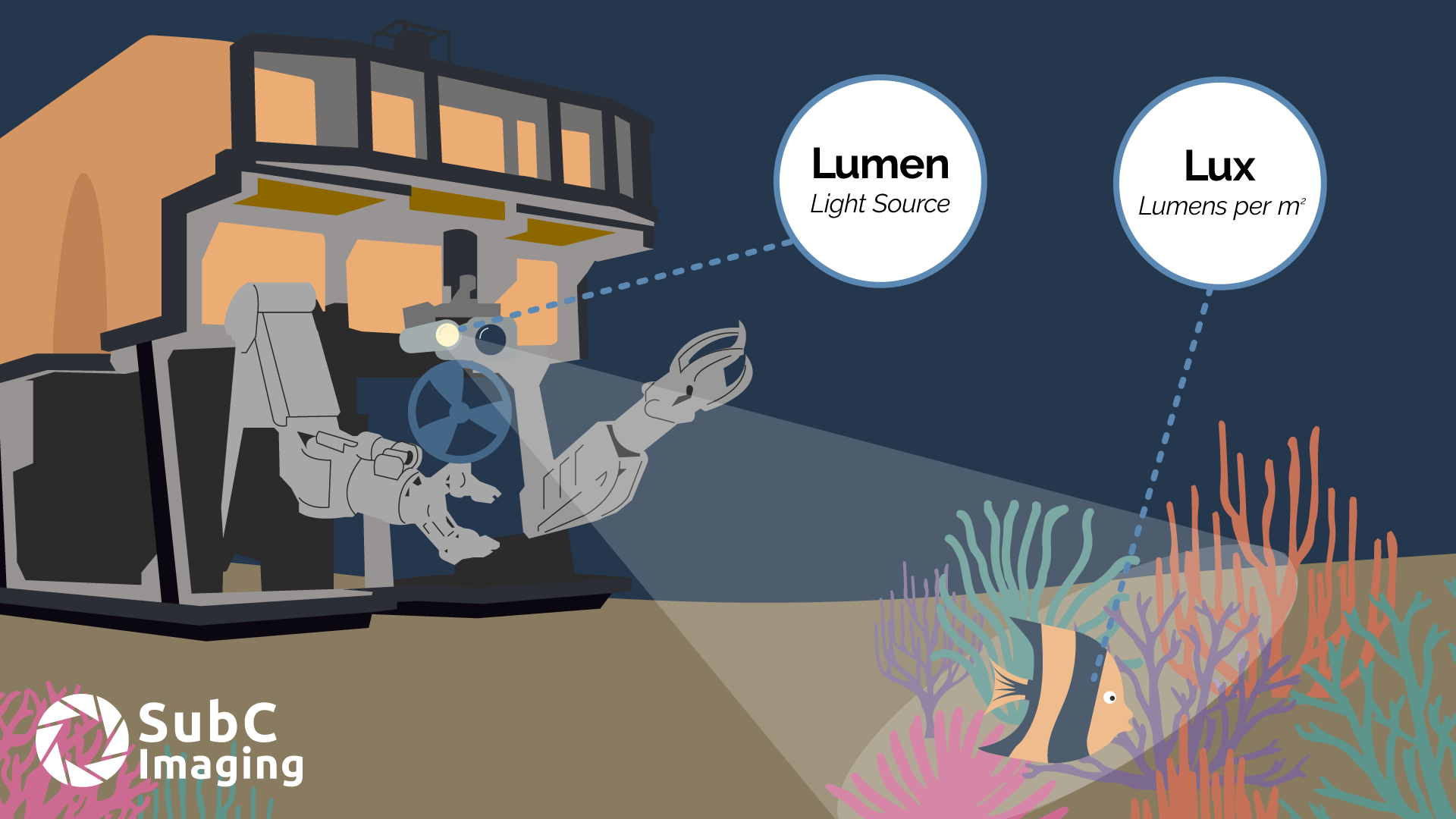Demystifying Lumens & Lux in Subsea LEDs & ROV Lights
Subsea surveys, inspections, research, exploration, and imaging present unique challenges, especially regarding subsea LEDs and ROV lights. Navigating and operating in the depths of our oceans heavily relies on advanced lighting systems. Among the key metrics defining the effectiveness of these systems are Lux and Lumens—two pivotal metrics in subsea LED technology. This article seeks to demystify these concepts, shedding light on their roles in underwater illumination.
Brightness & Illumination: Lumens and Lux Defined
Lumens
Lumens quantify the total visible light emitted by a source, irrespective of direction, measuring the brightness. Higher lumens result in brighter and more vivid images and videos in subsea environments. For instance, a standard 60-watt LED household light bulb typically emits around 800 lumens, while cutting-edge subsea LEDs, such as those from SubC, boast an impressive 32,000 lumens, making them an ideal choice for observations at significant depths.
Lux
Lux, on the other hand, is a measurement of the amount of visible light that falls on a surface. Unlike lumens, lux depends on both the amount of visible light present and the intensity of illumination on a given surface. This makes the direction of the light source a critical factor in lux measurements. Understanding lux is essential for evaluating how well a subsea LED or ROV light can illuminate a specific area or subject, directly impacting the clarity and quality of images and videos captured in underwater environments.
Factors Influencing Lux Levels in Subsea Applications
Water Clarity
The clarity of water directly affects Lux levels. Murky or sediment-laden water requires higher Lux values for effective illumination compared to clear, pristine conditions.
Depth
Lux levels decrease with depth due to light absorption by water. Understanding how Lux diminishes in relation to depth is crucial for designing effective subsea lighting systems.
Beam Angle of Subsea LED or ROV Lights
The beam angle of subsea LED or ROV lights influences the spread of light underwater. Choosing the right beam angle is essential to achieve desired Lux levels across a specific area.
Measuring Lux
One lux corresponds to one lumen per square meter (lux = lumen/m2). Measuring lux, or lumens per square meter, can be subjective because it depends on factors like the surface the subsea LED or ROV light is hitting. Since different manufacturers use various methods to explain their lux specifications, accuracy increases when measuring ambient light, exemplified by scenarios such as 0.05–0.3 lux mirroring the luminosity of a full moon on a clear night.
Lux vs. Lumens: Clarifying the Relationship
Lux and Lumens, essential metrics in subsea LED lighting design, contribute distinct but interconnected insights. Lux, concentrating on illuminance at specific points, ensures localized brilliance. In contrast, Lumens adopt a panoramic view, quantifying total light emission to gauge overall brightness in the underwater realm. The synergy between Lux and Lumens is evident—Lux pinpointing focused brilliance, while Lumens extend a broad radiance.
For subsea LEDs and ROV lights, Lux examines surface illuminance, directing attention to specific areas, while Lumens provide a comprehensive overview by measuring total light output. Despite their uniqueness, these metrics work together seamlessly in creating effective lighting systems.
Choosing the Right Subsea LED or ROV Lights
Selecting subsea LED and ROV lights with the appropriate lux and lumens ratings is paramount for successful underwater imaging. The balance between these two metrics ensures optimal visibility and image quality in various subsea conditions. Manufacturers like SubC, with their high-lumen LEDs, provide a reliable solution for professionals in marine research, offshore industries, and underwater cinematography. For more, see our 5 tips to pick the best deep sea lights.
Conclusion
Demystifying lux and lumens in subsea LED and ROV light technology is crucial for anyone involved in underwater surveys, research, inspections, imaging, or exploration. Understanding these metrics empowers professionals to make informed decisions when selecting subsea LEDs or ROV lights, ultimately enhancing the success and efficiency of subsea operations.




